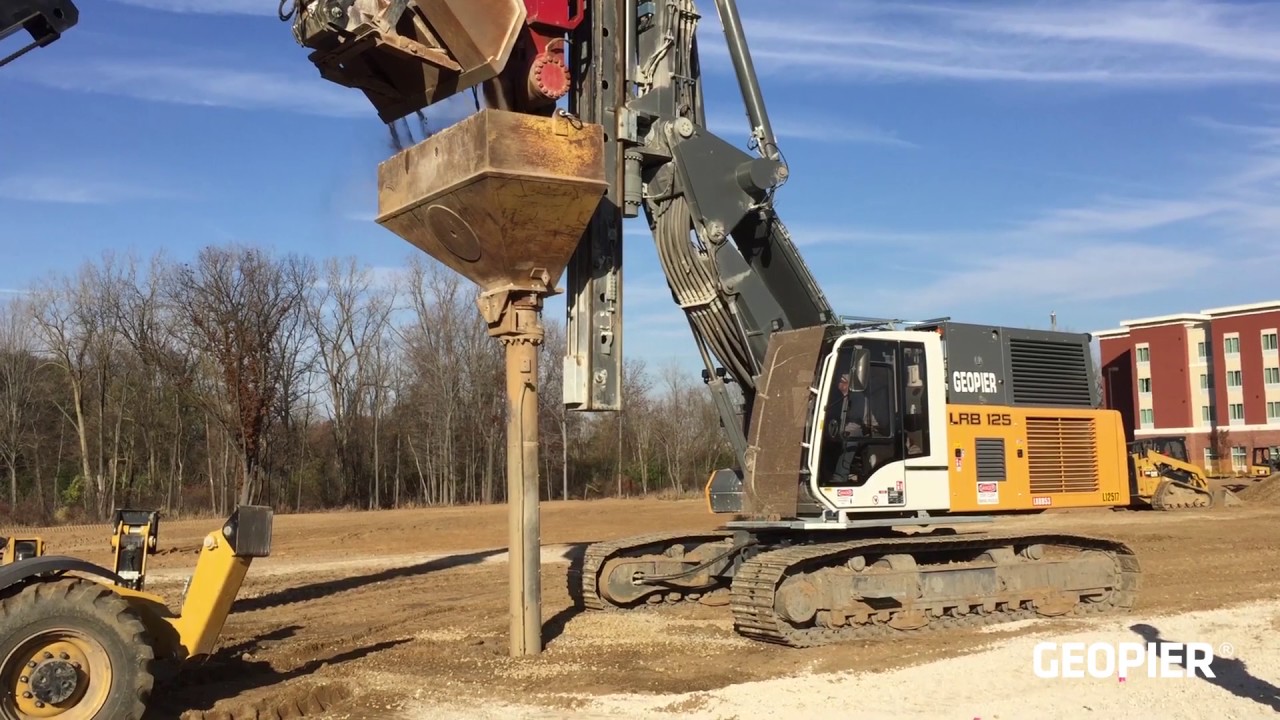Rammed Aggregate Piers (RAP)
A Rammed Aggregate Pier (RAP) is an intermediate foundation system which provides superior support capacity, increased bearing capacity and superior settlement control.
Weak soils are removed or displaced with columns of dense aggregate. This dense aggregate pier also densifies the matrix soils between the piers. The result is a stiffened mass of soil that provides improved bearing capacity and excellent settlement control.
The direct ramming with variable moment hammers greatly densifies the ground, significantly increasing horizontal stresses and stiffness in the matrix soils. The RAPs technique using the leader mounted variable moment and variable speed hammers provide superior strength and stiffness of the pier without generating resonance in the surrounding ground thus eliminating the negative effects usually associated with vibration techniques in piling works.
CLL is licensed to use the patented technology of USA company Geopier.
The technology is used to support buildings, high rises, silos, wind farm towers, bridges and rail/road embankments around the world and has a track record spanning the past 30 years.
In New Zealand, we have a significant earthquake\liquefaction risk in many areas and already we have used the Geopier ground improvement techniques to mitigate the liquefaction risk in approximately 200 sites.
Additionally, Raps are most useful in eliminating or limiting load induced settlements in soft soils.
The increased bearing pressure makes savings in time and cost possible.
- 20-50% cost savings on foundations
- Reduction in construction program
- Improved global stability
“RAP’s are an excellent option when the shear strength of the soil is insufficient to support a building, but is still greater than 35kPA.
“The combination of densification, stiffness and friction mitigates the risk of liquefaction in sandy and silty soils and eliminates damage in line with prescribed design criteria. The increased friction angle generated by RAPs installed in embankments creates stability long term and for the seismic case”
— Terry Donnelly

